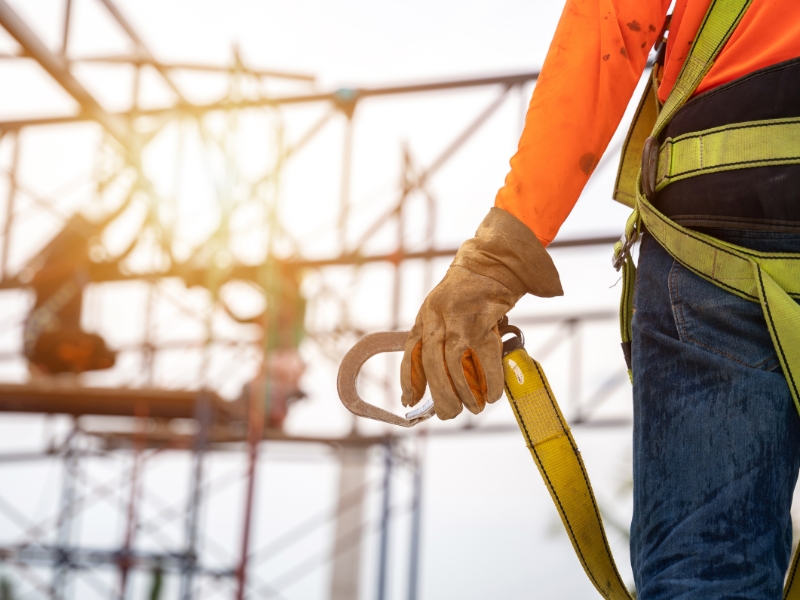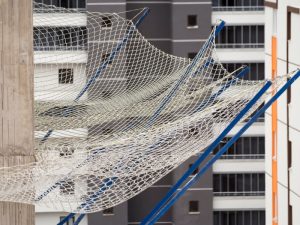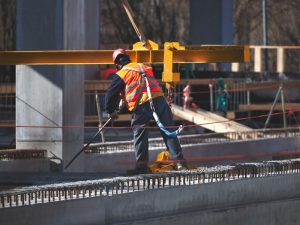Working at heights can be hazardous, and a fall prevention system is crucial for ensuring safety. Falls are among the leading causes of workplace injuries, especially in construction, maintenance, and other industries involving heights. Proper fall prevention systems not only protect workers from harm but also help businesses comply with workplace safety regulations. This article will explore the best fall prevention systems for working at heights, why they matter, and how to choose the right one for your needs.
Why is a fall prevention system critical when working at heights?
The risk of falling is ever-present when working at heights. Whether you’re working on scaffolding, ladders, or rooftops, the potential for a serious injury or fatality increases without proper fall protection. Fall prevention systems are designed to minimise these risks and ensure workers’ safety. By implementing an effective system, you reduce the chances of accidents, improve compliance with regulations, and create a safer work environment overall.
What are the different types of fall prevention systems?
There are several types of fall prevention systems available to suit different working conditions. These systems are designed to prevent falls or arrest the fall before injury occurs. The most common types include:
- Guardrails: Physical barriers installed along edges to prevent workers from falling.
- Personal Fall Arrest Systems (PFAS): These systems include a harness, lanyard, and anchor points that stop a fall once it begins.
- Fall Restraint Systems: These systems prevent workers from reaching a dangerous fall zone by limiting their movement.
- Safety Nets: These are used in high-risk construction areas to catch workers who fall from height.
- Anchor Points: Secure points where fall arrest systems or restraint systems can be attached, providing a reliable safety connection.
- Ladders and Stairways with Safety Features: Ladders and stairways equipped with handrails or other safety features to minimise fall risk.
How does the fall protection system enhance workplace safety?
A robust fall prevention system can significantly enhance safety by addressing potential hazards before they cause harm. The main benefits include:
- Reduced Risk of Injury: Fall prevention systems significantly reduce the chances of workers falling or getting injured while working at heights.
- Compliance with Safety Regulations: Adopting the correct fall protection system ensures compliance with strict industry safety standards and legal requirements.
- Increased Worker Confidence: Workers gain confidence knowing fall protection is in place, allowing them to focus on their tasks without safety concerns.
- Fewer accidents and fatalities: Effective fall prevention systems ensure safety when working at heights, lowering the overall accident rate in industries where such work is common.
- Cost Savings: Fewer injuries mean lower medical costs, insurance premiums, and potential legal expenses for the business.
What is the role of personal protective equipment (PPE) in fall prevention?
Personal Protective Equipment (PPE) is essential for fall prevention. While fall systems reduce risks, PPE ensures safety when falls occur. Key PPE components include harnesses, lanyards, helmets, non-slip footwear, and eye protection.
- Harnesses: Secures the worker to an anchor point, distributing impact force to minimise injury during a fall.
- Lanyards: Connect the harness to a secure anchor, with options for shock-absorbing or non-shock-absorbing models.
- Helmets: Protect the head from impacts during a fall.
- Non-Slip Footwear: Provides stable footing to prevent accidents on slippery surfaces.
- Eye Protection: Safety goggles or face shields protect against falling debris, a common hazard at heights.
How do safety regulations impact the selection of fall prevention systems?
Safety regulations are vital when selecting fall prevention systems. In Australia, regulations guide businesses in determining suitable safety measures for height-related tasks, influencing factors such as compliance, equipment, and worker protection.
- Legal requirements: In industries like construction, employers are legally obligated to implement fall prevention systems to comply with Australian Work Health and Safety regulations (WHS).
- Risk assessment: Regulations mandate a thorough risk assessment before selecting a fall prevention system. This ensures the system is appropriate for the specific risks of the task.
- Inspection and maintenance: Regulations require regular inspections and maintenance of fall protection equipment. This guarantees its effectiveness and safety over time.
- Training and certification: Workers must be appropriately trained and certified in using fall prevention systems, as per regulations. This ensures employees know how to use the systems effectively, minimising the risk of accidents.
When should you use fall restraints for height safety?
A fall restraint system prevents workers from reaching hazardous areas, ideal for situations where they might approach an edge or dangerous zone. It’s most effective in:
- Construction Sites: These are where workers are exposed to edge hazards such as open floors or scaffolding.
- Roofing: Prevents workers from getting too close to the roof edge.
- Maintenance Tasks: Workers performing maintenance tasks on elevated platforms or equipment.
- Working on Ladders: Prevents workers from leaning too far over or away from a ladder, reducing the risk of falling.
How does work safely at heights training enhance fall prevention safety?
Proper training is crucial for fall prevention systems. Training workers to “work safely at heights” ensures they can identify hazards and use equipment effectively. Key benefits include:
- Understanding Safety Procedures: Workers learn the correct steps to take before, during, and after working at heights to reduce risks.
- Correct Use of Equipment: Training ensures workers understand how to use fall protection systems like harnesses, lanyards, and safety nets.
- Emergency Response: Workers are trained to handle emergencies, knowing how to respond quickly and safely in case of a fall.
- Risk Awareness: Height safety training helps workers identify and assess fall hazards, enabling proactive risk minimisation.
- Legal Compliance: Training ensures businesses meet legal requirements, ensuring compliance with safety laws.
Through comprehensive working at heights training, workers gain confidence and competence, which directly contributes to a safer work environment.
Conclusion
In conclusion, Choosing the proper fall prevention system is crucial for maintaining safety when working at heights. Whether you need guardrails, fall arrest systems, or restraint systems, each solution plays a vital role in protecting workers from falls and ensuring compliance with safety regulations. Moreover, proper training is essential in enhancing the effectiveness of these systems.
Ensuring safe work at heights
For businesses and individuals looking to ensure safety at heights, SafeZone Training offers a variety of safety training courses designed to protect workers and businesses alike. Whether you’re looking for work safely at heights training or other safety certifications, our courses will equip you with the knowledge and skills needed to ensure a safe working environment. Contact SafeZone Training today!



